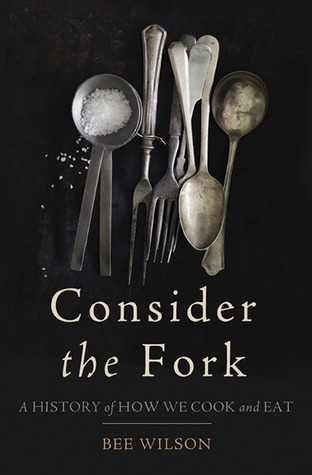Previously, I had made a large and somewhat random
list of books which lie in the intersection of the application of information theory, physics, and engineering practice to the area of biology. Below I’ll begin to do a somewhat better job of providing a finer gradation of technical level for both the hobbyist or the aspiring student who wishes to bring themselves to a higher level of understanding of these areas. In future posts, I’ll try to begin classifying other texts into graduated strata as well. The final list will be maintained here:
Books at the Intersection of Information Theory and Biology.
Introductory / General Readership / Popular Science Books
These books are written on a generally non-technical level and give a broad overview of their topics with occasional forays into interesting or intriguing subtopics. They include little, if any, mathematical equations or conceptualization. Typically, any high school student should be able to read, follow, and understand the broad concepts behind these books. Though often non-technical, these texts can give some useful insight into the topics at hand, even for the most advanced researchers.
Complexity: A Guided Tour by Melanie Mitchell (review)
Possibly one of the best places to start, this text gives a great overview of most of the major areas of study related to these fields.
Entropy Demystified: The Second Law Reduced to Plain Common Sense by Arieh Ben-Naim
One of the best books on the concept of entropy out there. It can be read even by middle school students with no exposure to algebra and does a fantastic job of laying out the conceptualization of how entropy underlies large areas of the broader subject. Even those with Ph.D.’s in statistical thermodynamics can gain something useful from this lovely volume.
The Information: A History, a Theory, a Flood by James Gleick (review)
A relatively recent popular science volume covering various conceptualizations of what information is and how it’s been dealt with in science and engineering. Though it has its flaws, its certainly a good introduction to the beginner, particularly with regard to history.
The Origin of Species by Charles Darwin
One of the most influential pieces of writing known to man, this classical text is the basis from which major strides in biology have been made as a result. A must read for everyone on the planet.
Information, Entropy, Life and the Universe: What We Know and What We Do Not Know by Arieh Ben-Naim
Information Theory and Evolution by John Avery
The Touchstone of Life: Molecular Information, Cell Communication, and the Foundations of Life by Werner R. Loewenstein (review)
Information Theory, Evolution, and the Origin of Life by Hubert P. Yockey
The four books above have a significant amount of overlap. Though one could read all of them, I recommend that those pressed for time choose Ben-Naim first. As I write this I’ll note that Ben-Naim’s book is scheduled for release on May 30, 2015, but he’s been kind enough to allow me to read an advance copy while it was in process; it gets my highest recommendation in its class. Loewenstein covers a bit more than Avery who also has a more basic presentation. Most who continue with the subject will later come across Yockey’s Information Theory and Molecular Biology which is similar to his text here but written at a slightly higher level of sophistication. Those who finish at this level of sophistication might want to try Yockey third instead.
The Red Queen: Sex and the Evolution of Human Nature by Matt Ridley
Grammatical Man: Information, Entropy, Language, and Life by Jeremy Campbell
Life’s Ratchet: How Molecular Machines Extract Order from Chaos by Peter M. Hoffmann
Complexity: The Emerging Science at the Edge of Order and Chaos by M. Mitchell Waldrop
The Big Picture: On the Origins of Life, Meaning, and the Universe Itself (Dutton, May 10, 2016)
In the coming weeks/months, I’ll try to continue putting recommended books on the remainder of the rest of the spectrum, the balance of which follows in outline form below. As always, I welcome suggestions and recommendations based on others’ experiences as well. If you’d like to suggest additional resources in any of the sections below, please do so via our suggestion box. For those interested in additional resources, please take a look at the ITBio Resources page which includes information about related research groups; references and journal articles; academic, research institutes, societies, groups, and organizations; and conferences, workshops, and symposia.
Lower Level Undergraduate
These books are written at a level that can be grasped and understood by most with a freshmen or sophomore university level. Coursework in math, science, and engineering will usually presume knowledge of calculus, basic probability theory, introductory physics, chemistry, and basic biology.
Upper Level Undergraduate
These books are written at a level that can be grasped and understood by those at a junior or senor university level. Coursework in math, science, and engineering may presume knowledge of probability theory, differential equations, linear algebra, complex analysis, abstract algebra, signal processing, organic chemistry, molecular biology, evolutionary theory, thermodynamics, advanced physics, and basic information theory.
Graduate Level
These books are written at a level that can be grasped and understood by most working at the level of a master’s level at most universities. Coursework presumes all the previously mentioned classes, though may require a higher level of sub-specialization in one or more areas of mathematics, physics, biology, or engineering practice. Because of the depth and breadth of disciplines covered here, many may feel the need to delve into areas outside of their particular specialization.
 The Rule of Four by Ian Caldwell and Dustin Thomason
The Rule of Four by Ian Caldwell and Dustin Thomason



















